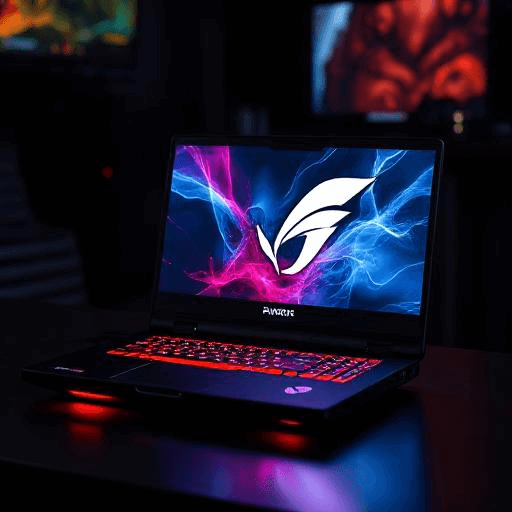With the constant evolution of technology, the gaming industry sees regular advancements in hardware that significantly impact performance. One of the recent developments creating a buzz is DDR5 memory. As DDR5 starts replacing DDR4, many gamers and tech enthusiasts are curious about its implications for gaming performance. This article delves into understanding whether DDR5 is good for gaming, examining its features, performance benefits, and potential drawbacks.
Introduction to DDR5 Memory
DDR5 (Double Data Rate 5) RAM is the fifth generation of DDR memory, succeeding DDR4. It introduces several enhancements aimed at improving efficiency, speed, and overall performance. Officially launched in mid-2021, DDR5 memory modules have now become more accessible to consumers and are increasingly integrated into modern gaming rigs and high-performance computing setups.
Key Features of DDR5
- Higher Bandwidth: DDR5 offers significantly higher bandwidth compared to DDR4, increasing from a maximum of 3.2 Gbps in DDR4 to up to 6.4 Gbps and beyond in DDR5 modules.
- Increased Capacity: DDR5 modules support higher capacities, with potential for up to 128GB per module. This allows for more memory-intensive applications and smoother multitasking.
- Enhanced Power Efficiency: DDR5 operates at lower voltage levels (typically 1.1V) compared to DDR4 (1.2V), leading to reduced power consumption and heat generation.
- Improved Error Correction: DDR5 comes with improved error correction capabilities, including on-die ECC (Error-Correcting Code), which enhances data integrity and reliability.
Performance Benefits for Gaming
- Faster Load Times: Higher bandwidth facilitates quicker data transfer rates, resulting in faster game loading times and smoother in-game transitions.
- Enhanced Multitasking: The increased capacity and efficiency of DDR5 allow gamers to run multiple applications concurrently without significant performance degradation. This is particularly useful for streamers who need to run streaming software alongside demanding games.
- Better Future-Proofing: As game developers continue to push the boundaries of graphics and simulation complexity, having DDR5 ensures that systems remain capable of handling future game releases effectively.
- Improved Frame Rates: Faster memory can contribute to higher frame rates, especially in CPU-bound games where memory speed is a limiting factor.
Potential Drawbacks
- Cost: As with any new technology, DDR5 comes at a premium. Gamers building on a budget might find the price of DDR5 modules relatively high compared to DDR4.
- Compatibility: Not all current motherboards and processors support DDR5. Upgrading to DDR5 often necessitates a complete system overhaul, including a new CPU and motherboard, which can be costly.
- Marginal Gains for Some Games: While DDR5 offers considerable improvements, not all games are equally demanding on memory. Gamers might observe minimal performance gains in titles that are less memory-intensive.
Comparative Analysis: DDR4 vs. DDR5
To provide a clearer picture, let’s compare DDR4 and DDR5 in key gaming scenarios:
- High-End Gaming PCs: For cutting-edge gaming PCs that aim to run the latest AAA titles at maximum settings, DDR5 offers noticeable performance enhancements, particularly in terms of frame rates and smoothness during complex scenes.
- eSports and Competitive Gaming: Competitive gaming often prioritizes frame rates and low latency. The increased bandwidth and reduced latency of DDR5 can ensure a competitive edge in fast-paced games.
- VR and High-Resolution Gaming: Virtual Reality (VR) and 4K gaming are resource-intensive. DDR5’s higher data transfer rates and larger capacities provide significant benefits in these scenarios, ensuring an immersive and lag-free experience.
summery
In summary, DDR5 presents several advancements that can elevate gaming performance, including higher bandwidth, better power efficiency, and enhanced capacity. While the benefits are more pronounced in high-end and future-proofed systems, the cost and compatibility considerations are key factors for gamers to weigh. For those already on the path to upgrading their rigs with the latest CPUs and motherboards, investing in DDR5 is a prudent choice. However, for gamers with a more constrained budget or those using systems primarily for less demanding games, sticking with DDR4 might be more practical for the time being.
As the gaming industry evolves and DDR5 becomes more mainstream, its advantages will likely become even more pronounced, making it an essential component of next-generation gaming setups.
How does DDR5 differ from DDR4?
DDR5 and DDR4 are both types of Double Data Rate (DDR) Synchronous Dynamic Random Access Memory (SDRAM), but they represent different generations of memory technology with several key differences. Here’s a detailed comparison of the two:
1. Data Rate and Bandwidth
DDR4:
- Data rate: Typically ranges from 1600 Mbps to 3200 Mbps.
- Bandwidth: Offers a maximum bandwidth of around 25.6 GB/s (Gigabytes per second) for a single module operating at 3200 Mbps.
DDR5:
- Data rate: Starts at 4800 Mbps and can go up to 8400 Mbps or higher as the technology matures.
- Bandwidth: Provides a maximum bandwidth of about 51.2 GB/s for a single module operating at 6400 Mbps. This effectively doubles the bandwidth compared to high-end DDR4 modules.
2. Capacity
DDR4:
- Typical module sizes range from 4GB to 32GB.
- Maximum theoretical capacity is up to 64GB per module under certain configurations.
DDR5:
- Module sizes start at 8GB and can go up to 128GB.
- Maximum theoretical capacity exceeds 128GB per module, which is significantly higher due to advancements in memory density.
3. Power Consumption and Voltage
DDR4:
- Operates at a standard voltage of 1.2V.
- Some low-power DDR4 variants (DDR4L) operate at 1.05V.
DDR5:
- Operates at a lower voltage of 1.1V, contributing to better energy efficiency.
- Includes on-die voltage regulation, which improves power delivery and reduces the complexity of motherboard designs.
4. Latency
DDR4:
- Generally, DDR4 has lower latency than DDR5 owing to its more matured technology and higher JEDEC latency standards.
DDR5:
- While DDR5’s higher bandwidth offsets some of the latency differences, its base latency (measured in nanoseconds) can be higher than that of DDR4 modules due to the increased complexity and speed.
- Latency can vary depending on the specific modules and configurations but typically starts slightly higher than DDR4.
5. Error Correction
DDR4:
- ECC (Error-Correcting Code) is available but typically found in server-grade or professional-grade memory rather than consumer-grade modules.
- External (motherboard managed) ECC.
DDR5:
- Enhanced error correction capabilities, including on-die ECC, which improves overall data integrity and reliability even on consumer-grade modules.
- Both on-die ECC and external ECC are managed within the memory chip itself.
6. Channels and Architecture
DDR4:
- Utilizes a single 64-bit channel per module.
- Some dual-channel configurations double the memory bandwidth.
DDR5:
- Each module has two independent 32-bit channels, which enhances memory access efficiency and improves overall performance.
- The dual-channel nature within each module improves access times and overall bandwidth.
7. Burst Length
DDR4:
- Burst length is typically 8, meaning it can handle eight data cycles per read or write operation.
DDR5:
- Doubling the burst length to 16 contributes to increased efficiency in transferring data and better utilization of the wider bandwidth.
8. Memory Prefetch
DDR4:
- Has an 8n prefetch architecture, meaning it can fetch 8 bits per clock cycle.
DDR5:
- Upgrades this to a 16n prefetch architecture, allowing it to fetch 16 bits per clock cycle, which contributes to its higher bandwidth and efficiency.
9. Price and Availability
DDR4:
- More affordable and widely available due to its longer time in the market and established manufacturing processes.
DDR5:
- Currently more expensive and less widespread, but prices and availability are expected to improve over time as production scales and technology becomes more mainstream.
Summery
DDR5 offers substantial advancements over DDR4 in terms of bandwidth, capacity, power efficiency, and error correction, making it better suited for future-proofing and high-performance applications. However, these benefits come at a higher cost and may require a complete system upgrade, including a compatible motherboard and CPU. For gamers and professionals seeking top-tier performance, DDR5 is a compelling choice, but DDR4 still offers excellent performance for many current applications at a more budget-friendly price.
What is the typical data rate range for DDR5?
The typical data rate range for DDR5 memory starts at 4800 Mbps and can go up to 6400 Mbps. As technology advances, DDR5 modules are expected to reach higher data rates, with future potential exceeding 8400 Mbps. Here’s a summary of the typical data rate ranges for DDR5:
Initial and Current Ranges:
- Starting Data Rate: 4800 Mbps
- Common Current Range: 4800 Mbps to 6400 Mbps
Future Potential:
- High-End Modules: Expected to reach 7200 Mbps, 8400 Mbps, and potentially higher as the technology matures and manufacturing processes improve.
This increase in data rate compared to its predecessor, DDR4 (which ranges from 1600 Mbps to around 3200 Mbps, with some high-end modules reaching up to 4266 Mbps), signifies a substantial improvement in memory performance, making DDR5 well-suited for high-performance and future-proof computing needs.
What are the projected timelines for DDR5 data rate advancements?
DDR5 memory technology is still in its relative infancy, and as with previous generations of RAM, its data rates are expected to improve incrementally over time. Here’s a projected timeline for DDR5 data rate advancements based on industry trends, manufacturer roadmaps, and historical progress with previous DDR technologies:
2021-2022: Initial Launch Phase
- Starting Data Rate: 4800 Mbps – 5200 Mbps
- Early availability: Initial DDR5 modules were launched with data rates typically starting at 4800 Mbps, targeting early adopters and high-performance computing markets.
2023-2024: Mainstream Adoption and Initial Scaling
- Data Rate Range: 4800 Mbps – 6400 Mbps
- Increased availability: DDR5 starts seeing broader adoption in consumer-grade systems, including gaming and professional workstations.
- Introduction of higher rates: Modules with 5600 Mbps to 6400 Mbps become more common in the market.
2025-2026: Maturation and High Performance
- Data Rate Range: 6400 Mbps – 8400 Mbps
- Widespread adoption: DDR5 becomes the standard in new desktop and laptop builds.
- High-end modules: Data rates in the range of 7200 Mbps to 8400 Mbps become available, targeting enthusiasts and high-performance computing applications.
2027 and Beyond: Advanced Scaling
- Data Rate Range: 8400 Mbps and higher
- Technological improvements: Continued advancements in RAM technology, manufacturing processes, and memory controller designs push data rates beyond 8400 Mbps.
- Future standards: Introduction of new JEDEC standards might further push DDR5 capabilities or lead to early discussions about DDR6.
Factors Influencing Timeline Advancements
- Manufacturing Advances: Improvements in semiconductor manufacturing technologies, such as smaller process nodes, will facilitate higher data rates.
- Market Demand: Increasing demand for higher performance in gaming, AI, machine learning, and other data-intensive applications will drive innovation.
- Competitive Pressure: Competition among RAM manufacturers (e.g., Samsung, Micron, SK Hynix) will accelerate the development and release of higher-speed modules.
- Processor and Motherboard Support: Adoption of DDR5 will be influenced by CPU and motherboard manufacturers (like Intel and AMD) incorporating support for higher-speed DDR5 in their products.
Conclusion
DDR5 data rates are poised to see significant advancements over the coming years, moving from an initial range of 4800 Mbps – 5200 Mbps to potentially exceeding 8400 Mbps by 2027 and beyond. As the technology matures and adoption becomes more widespread, advancements in both manufacturing techniques and competitive pressures will continue to drive these enhancements, paving the way for higher performance and greater efficiencies in computing.



